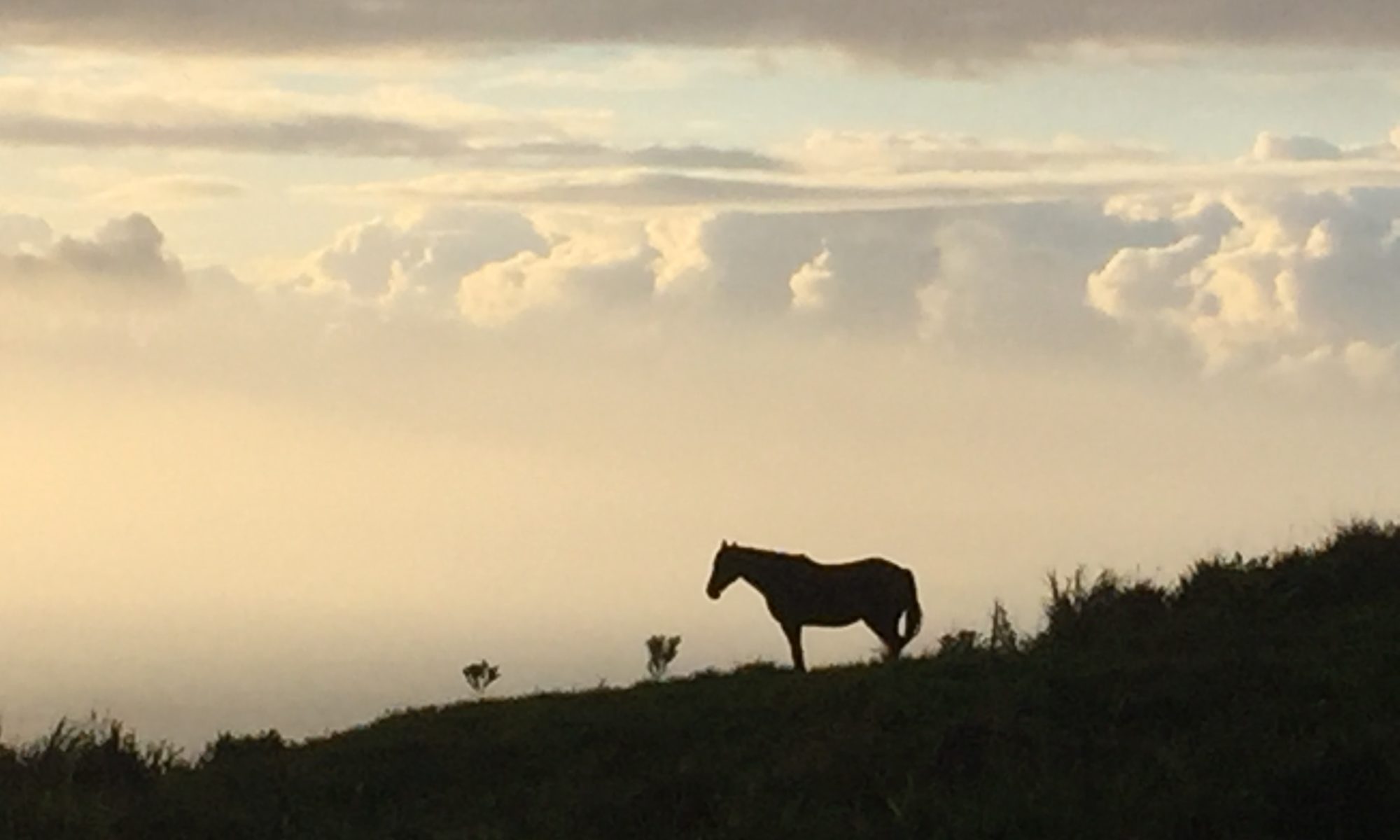Pele, they say in the legends, was a traveler from the ancestral homelands of Kahiki who came to this island with her clan of brothers and sisters and settled in the area named Keauhou. There was a war between the early settlers and Pele and her clan took refuge in a great cave. The volcano erupted and the cave collapsed, sealing the clan inside. This is how she became identified with the volcano Kilauea.
In the old days those who came as visitors to the hostile, numinous lands of Pele had themselves tattoo-ed using a blue dye made from a kind of iris that grows only near the volcano. Others brought the umbilical cords of their children, or of themselves, to place at the doorstep of the volcano.
Piko is the word for the belly button where the umbilical cord was attached. It is also the word for a spiritual place of origin and power – a center of the universe. That earth is fire, that we are connected from birth to the molten core of our earth, and live always under peril but centered in the knowledge of that connection – this is what might be expressed in the tradition of presenting the umbilical cord to Pele.
It is treacherous to cross over the volcano these days, when Pele is awake and the road cracks and buckles. It is not treacherous in the way it was for Chief Keoua’s army, that perished in a sudden rain of volcanic debris and molten glass two centuries ago, leaving their footprints behind in the hardened ash deposits.
How many times have I passed over the volcano? As a child, bumping along on the narrow old road through the lava fields in the back seat of the family car, dreamily seeing fairy realms in the forested slopes above; as a teen venturing through with my cousins, telling ourselves ghost stories as the darkness closed around the beams of the headlights; as a young mother hurrying home through the lava desert with my baby, singing to keep her quiet.
The more likely danger even now is falling asleep at the wheel on the curving road over the volcano and running into the unforgiving basalt fields on either side. That is how people lose their lives now. It is a long drive in the dark; do they begin to dream of ghostly shapes – of a white dog, of an old woman, of a young woman with fiery eyes? These are the forms that Pele is said to take when she appears to travelers.




